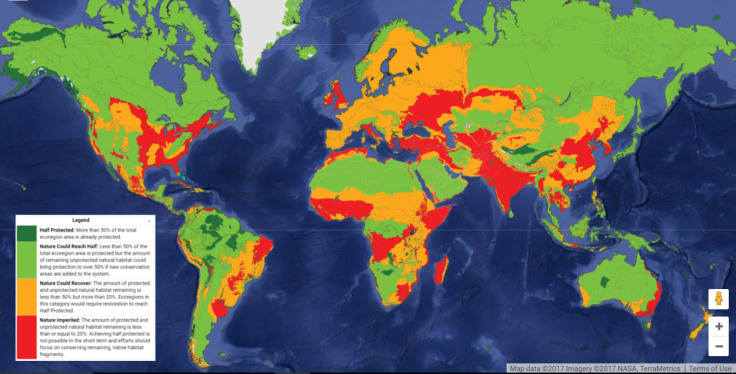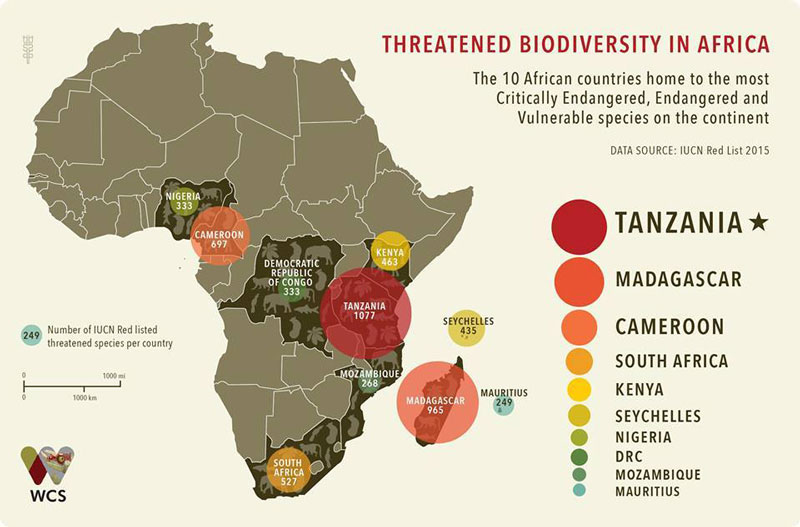Solutions to Stem the Tide of Extinction
Sep 10th, 2018 | By admin | Category: Biodiversity/ConservationBy Suzanne York.
We humans, in general, pride ourselves on having such ingenious brains, but we’re not always that smart. We live in a society that is using up natural resources at an unsustainable rate – resources upon which our lives depend upon – yet we blithely continue with business as usual. Certainly there are many people trying to change course, but given the severity of our problems, we need a critical mass working for a better world.
The Devastation in Front of Our Eyes
Case in point – we are witnessing the beginnings of the sixth mass extinction and will likely see the demise of iconic species such as rhinos, tigers, giraffes and elephants in the wild, and many creatures even yet to be discovered by humans.
Just this week, it came to light that one of Africa’s worst mass poaching sprees occurred in Botswana, when it was discovered that 90 elephants had been slaughtered, their tusks hacked off their faces.
According to Elephants Without Borders, the elephants were shot with heavy-caliber rifles at watering spots near a wildlife sanctuary in the Okavango Delta.
Elephants are a highly intelligent, emotional species. Warning – don’t read this next sentence if you are faint of heart – Mike Chase, director of Elephants Without Borders, said the carcasses’ skulls were “chopped open by presumably very sharp axes, to remove their tusks”. In some cases, the trunks were also removed.
Reportedly poachers are focusing efforts in Botswana, which has the largest elephant population in Africa at more than 135,000, after wiping out elephants in Zambia and Angola.
Nearly 30,000 elephants are killed annually, mostly for the ivory trade.
This is happening on our watch. There is no justification for this slaughter.
How to Create a Healthy Relationship
Ultimately humans need to change their relationship with other creatures, one grounded in respect. That might be a tough concept for some people to accept, but once upon a time our ancestors adhered to that view. Some people, namely indigenous people, still do today.
There are some solutions that might help save many of the planet’s wild animals.
One solution is supporting nature’s rights, which, as defined by the Global Alliance for Rights of Nature, is the recognition that Earth’s ecosystems –trees, oceans, animals, mountains – have rights just as human beings have rights. Rather than treating nature as property under the law, as humans have been doing for millennia, rights of nature acknowledges that nature in all its life forms has the right to exist, persist, maintain and regenerate its vital cycles.
This movement is resonating with people. Earlier this year, the Supreme Court of Colombia declared that the country’s Amazon region possesses legal rights.
In New Zealand, the Whanganui River became the first water system in the world to be recognized as a rights-bearing entity, holding legal “personhood” status. It is owned not by any government or person, but by the river itself.
Earlier this year, the Ponca Nation of Oklahoma voted to pass a statute recognizing the rights of nature, an effort to help protect communities from the detrimental effects of fracking.
After passage of the statute, Casey Camp-Horinek, a member of the Ponca Tribal Business Council, said, “We are proud to be moving into the future by honoring our original instructions to respect all life on our Mother Earth.”
From Ecuador to India, more and more countries are implementing or considering incorporating rights of nature into governmental and legal systems. Awareness is growing that it is to our benefit to have a clean and thriving environment, for those of us here today but also for future generations
The United Nations Harmony with Nature Knowledge Network tracks the passage of rights of nature laws and policies. See the current list here.

An analysis of 846 regional ecosystem types in 14 biomes in respect to the “Nature Needs Half” scientific concept put forth in a 2017 paper.
The second solution for protecting the environment is the concept of Nature Needs Half, that supports a reciprocal, balanced relationship between people and nature. It is gaining traction with conservationists and other concerned parties who understand the imperative to protect our precious biodiversity.
Nature Needs Half seeks to achieve fifty percent of the planet under protection by 2050. This growing movement may be a good way to attract and motivate those concerned about protecting the world’s biodiversity. Longer term, Nature Needs Half could be greatly strengthened by linking to the rights of nature movement.
The coalition proposes a ‘Global Deal for Nature’ as a way to increase protected habitats and back restoration and conservation strategies, including the rights of indigenous peoples to protect native lands. The goal is to protect half the terrestrial realm by 2050 to halt the extinction crisis, while sustaining human livelihoods.
Stepping Up to the Challenge
There are many deep questions to ask ourselves, including, “Can humans step up?” If we don’t, we risk unknown consequences of the devastation we are bringing upon the natural world
The above solutions offer a positive path forward for all of Earth’s inhabitants.
Suzanne York is Director of Transition Earth.

![A thriving herd of elephants in Kidepo National Park, Uganda. [Photo: Suzanne York]](http://populationgrowth.org/wp-content/uploads/2018/09/herd-of-elephants-Kidepo-Natl-Park-1024x587.jpg)
